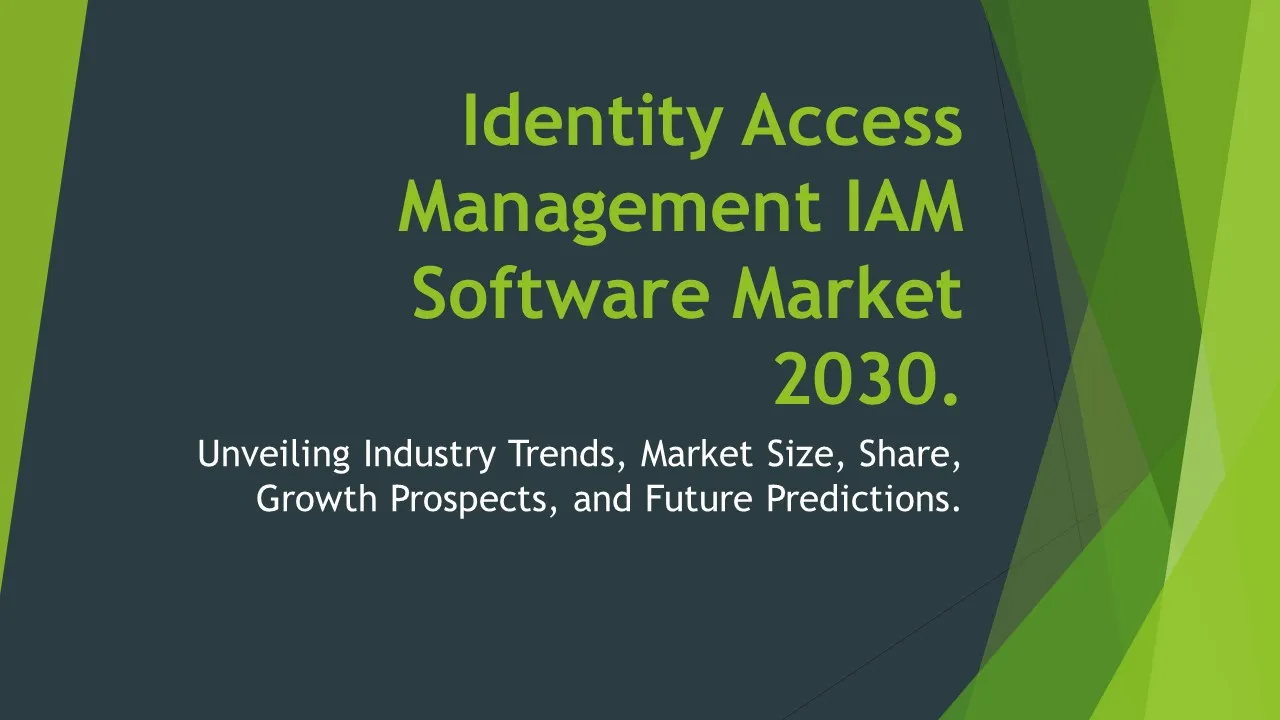Cloud Access Security Brokers CASBs
Cloud Access Security Brokers (CASBs) Market Segments - by Deployment Mode (Cloud-based, On-premises, Hybrid), Service Model (IaaS, PaaS, SaaS), Organization Size (Small and Medium-sized Enterprises, Large Enterprises), Industry Vertical (BFSI, Healthcare, IT and Telecommunication, Government and Public Sector, Retail), and Region (North America, Europe, Asia Pacific, Latin America, Middle East & Africa) - Global Industry Analysis, Growth, Share, Size, Trends, and Forecast 2025-2035
- Report Preview
- Table Of Content
- Segments
- Methodology
Cloud Access Security Brokers CASBs Market Outlook
The global Cloud Access Security Brokers (CASBs) market is projected to reach approximately USD 5.5 billion by 2035, growing at a Compound Annual Growth Rate (CAGR) of about 20% from 2025 to 2035. This significant growth is driven by the increasing need for organizations to secure their cloud services and protect sensitive data from various threats. With the rapid adoption of cloud applications and remote work, businesses are increasingly faced with challenges related to data security, compliance, and risk management. The CASBs offer solutions that address these challenges by providing visibility, compliance enforcement, and data security across multiple cloud platforms. As organizations continue to migrate towards cloud-based environments, the necessity for robust security solutions from CASBs is becoming critically important, thus fueling the market's expansion.
Growth Factor of the Market
The growth of the Cloud Access Security Brokers (CASBs) market can be attributed to several key factors. Firstly, the increasing adoption of cloud computing services across various industries is creating a surge in demand for security solutions that can operate seamlessly across different cloud environments. Organizations are realizing the need to enforce security policies that span various SaaS, PaaS, and IaaS platforms, which is where CASBs play a crucial role. Secondly, data privacy regulations such as GDPR and HIPAA are prompting organizations to seek compliance-related solutions, further boosting the demand for CASBs that can help monitor and protect sensitive data. Furthermore, the growing trend of remote work has increased the attack surface for cyber threats, leading to an urgent need for enhanced security measures. In addition, the rise in sophisticated cyber threats and incidents has made businesses more proactive about investing in security solutions, driving the CASB market's growth. Finally, as organizations strive for digital transformation, integrating CASB solutions into their IT infrastructure becomes imperative for maintaining a secure operational environment.
Key Highlights of the Market
- The global CASB market is expected to grow at a CAGR of 20% from 2025 to 2035.
- North America holds the largest market share, accounting for approximately 40% of the global CASB market.
- Cloud-based deployment modes are projected to dominate the market, driven by the rapid shift to cloud services.
- The BFSI sector is a significant contributor to market growth due to stringent regulatory requirements.
- Emerging markets in Asia Pacific are expected to experience the highest growth rate, as more organizations adopt cloud technologies.
By Deployment Mode
Cloud-based:
Cloud-based deployment is anticipated to be the dominant segment within the CASB market due to its scalability, flexibility, and cost-effectiveness. The cloud-based model allows organizations to access security services remotely without the need for extensive on-premises infrastructure. This deployment mode is particularly appealing to businesses that are looking to quickly implement security measures across multiple cloud applications. With data and apps located off-premises, organizations can benefit from the real-time analytics and threat detection capabilities that cloud-based CASBs offer. Furthermore, as remote work becomes more prevalent, businesses are increasingly relying on cloud solutions, thus driving the demand for cloud-based CASB services that can provide continuous monitoring and protection against potential threats. Ultimately, the cloud-based deployment mode is set to play a crucial role in the overall growth of the CASB market.
On-premises:
The on-premises deployment mode is expected to experience steady growth as organizations with strict regulatory compliance requirements or specific data governance standards opt for this solution. By utilizing on-premises CASBs, businesses can maintain greater control over their security infrastructure and ensure that sensitive data remains within their controlled environment. This deployment model is particularly favored by industries such as finance, healthcare, and government, where data privacy is paramount. However, the need for extensive IT resources and management of hardware can be challenging for smaller enterprises, which might limit the growth potential of this segment. Nonetheless, the on-premises deployment remains an essential option for organizations that prioritize data control and compliance with internal policies, contributing to a diverse landscape of CASB deployment strategies.
Hybrid:
Hybrid deployment combines both cloud-based and on-premises solutions, offering organizations the flexibility to choose the best of both worlds. This model is appealing for businesses that operate in a multi-cloud environment or have existing on-premises infrastructure they wish to integrate with new cloud services. The hybrid approach allows organizations to maintain critical data on-site while leveraging cloud services for scalability and advanced security features. As organizations increasingly adopt a mix of cloud services, the demand for solutions that can seamlessly integrate with both cloud and on-premises resources is expected to grow. This flexibility not only enhances operational efficiency but also meets diverse regulatory requirements, driving the hybrid deployment mode's market expansion.
By Service Model
IaaS:
The Infrastructure as a Service (IaaS) segment represents a growing opportunity within the CASB market as organizations shift towards utilizing virtualized computing resources provided by third-party vendors. IaaS solutions allow businesses to host applications and store data in a scalable environment, but they also introduce unique security challenges. CASBs tailored for IaaS environments provide organizations with essential security features such as data encryption, identity and access management, and threat detection. As organizations increasingly rely on IaaS for their IT infrastructure, the need for robust security solutions to protect against potential breaches and data leaks becomes critical, driving growth in this segment.
PaaS:
The Platform as a Service (PaaS) model is gaining traction within the CASB market as it simplifies the deployment of applications while abstracting the underlying infrastructure. This model is particularly beneficial for developers who require a streamlined environment for building and testing applications. However, as organizations adopt PaaS solutions, the complexity of managing security risks associated with application development increases. CASBs designed for PaaS address these challenges by providing tools for managing access, monitoring application security, and ensuring compliance with various standards. The growth of PaaS adoption across various industries is expected to boost the demand for CASB solutions that can safeguard these environments, making it a vital component of the overall market.
SaaS:
Software as a Service (SaaS) is the most widely adopted service model in the CASB market due to the prevalence of cloud-based applications in various business functions. As organizations increasingly turn to SaaS solutions for tasks such as customer relationship management (CRM), human resources management, and collaboration, the necessity for effective security measures becomes paramount. CASBs focused on SaaS applications provide organizations with visibility over their data, ensuring that potential vulnerabilities are addressed swiftly. Additionally, these solutions enable organizations to enforce security policies and gain insights into user activity, catering to the diverse security needs associated with SaaS applications. Thus, as SaaS continues to dominate cloud service offerings, the CASB market will experience corresponding growth in this segment.
By Organization Size
Small and Medium-sized Enterprises:
Small and Medium-sized Enterprises (SMEs) are increasingly recognizing the need for robust security solutions as they adopt cloud services. Although typically constrained by budgets and resources, SMEs can benefit from CASB solutions that offer scalability and cost-effectiveness. Many CASB providers have developed tailored solutions specifically for SMEs, enabling them to access enterprise-grade security features without significant investment. The growing trend of digital transformation among SMEs is further propelling the demand for CASBs, allowing these organizations to protect their sensitive data while competing in the digital marketplace. As awareness of cybersecurity risks continues to rise, SMEs are expected to increasingly adopt CASB solutions to safeguard their cloud environments, driving growth in this segment.
Large Enterprises:
Large Enterprises represent a significant portion of the CASB market due to their extensive cloud usage and complex IT environments. These organizations typically have a greater volume of sensitive data and face stringent regulatory compliance requirements, making them prime candidates for CASB investments. A CASB solution can help large enterprises monitor and protect their data across multiple cloud platforms while managing risk and compliance efficiently. Additionally, the sophisticated threat landscape facing large organizations necessitates advanced security measures that CASBs can provide. As these enterprises continue to expand their cloud operations, the demand for CASB solutions will remain strong, reinforcing their vital role in enterprise security strategies.
By Industry Vertical
BFSI:
The Banking, Financial Services, and Insurance (BFSI) sector is one of the most significant contributors to the Cloud Access Security Brokers market. This industry operates under strict regulatory requirements concerning data privacy and protection, making CASBs an essential component of their security strategy. By leveraging CASB solutions, BFSI organizations can ensure compliance with regulations such as PCI DSS and GDPR while safeguarding sensitive customer data and financial transactions. The increasing adoption of cloud-based applications within the BFSI sector further drives the demand for CASB solutions, as financial institutions seek to enhance their security posture and protect against evolving cyber threats. The ongoing digital transformation in this sector underscores the critical importance of CASBs as organizations navigate the complex landscape of cloud security.
Healthcare:
The healthcare industry is experiencing substantial digital transformation with the growing adoption of cloud technologies for patient management, electronic health records, and telehealth services. As healthcare organizations move sensitive patient data to the cloud, the need for CASB solutions becomes paramount to ensure compliance with regulations such as HIPAA while mitigating security risks. CASBs offer visibility and control over patient data access, helping healthcare organizations protect against data breaches and unauthorized access. Furthermore, as the industry faces increasing cyber threats, the ability of CASBs to monitor user behavior and enforce security policies becomes critical in maintaining patient trust and safeguarding sensitive information. As such, the healthcare sector is expected to drive significant growth in the CASB market.
IT and Telecommunication:
The IT and telecommunication sector is a major driver of the CASB market as businesses increasingly rely on cloud applications and services for operational efficiency. As telecommunication companies adopt cloud-based solutions for service delivery and customer engagement, they face unique security challenges that require robust security frameworks. CASBs help IT and telecommunication organizations secure their cloud applications, manage access to sensitive data, and comply with industry regulations. Moreover, as the demand for secure communication solutions continues to rise, the role of CASBs in providing comprehensive security for cloud services becomes increasingly vital. This sector's rapid growth will likely lead to heightened demand for CASB solutions aimed at enhancing security measures.
Government and Public Sector:
The government and public sector have a pressing need for CASB solutions as they migrate to cloud-based technologies to streamline operations and improve public services. With the sensitive nature of government data, CASBs provide the necessary tools to secure and manage access to critical information while ensuring compliance with federal regulations. The ability to monitor user activity and enforce security policies is essential for preventing data breaches and maintaining public trust. As governments around the world increasingly invest in digital transformation initiatives, the demand for CASB solutions tailored for the public sector is likely to grow, reinforcing the importance of security in the cloud.
Retail:
The retail industry is undergoing significant changes as businesses embrace e-commerce and digital channels to enhance customer experiences. As retailers adopt cloud-based applications for inventory management, customer relationship management, and sales analytics, they also face heightened risks regarding data privacy and security. CASBs play a crucial role in helping retailers secure their cloud environments, safeguarding customer information, and ensuring compliance with data protection regulations. With the rapid expansion of online shopping and payment systems, the need for effective cloud security solutions will continue to rise, driving the retail sector's demand for CASB solutions. The intersection of cloud adoption and data security in the retail industry positions it as a growth driver in the CASB market.
By Region
North America currently holds the largest share of the Cloud Access Security Brokers market, representing approximately 40% of the global market. The region's dominance is attributed to the presence of leading technology companies and significant investments in cloud infrastructure and cybersecurity. Furthermore, stringent regulatory requirements across various sectors, including BFSI and healthcare, drive the demand for CASB solutions to ensure compliance and data protection. The growing trend of digital transformation among enterprises in North America will continue to boost the adoption of CASB solutions, expected to grow at a CAGR of 21% over the next decade.
In Europe, the CASB market is also witnessing substantial growth, fueled by the increasing awareness of data privacy regulations such as GDPR. This region is projected to account for approximately 30% of the global CASB market by 2035. As European organizations adopt cloud technologies, the demand for security solutions that provide compliance and protection for sensitive data is on the rise. The Asia Pacific region is expected to experience the highest growth rate, driven by the rapid adoption of cloud services among enterprises in countries like China, India, and Japan. This region's market share is likely to grow significantly as organizations prioritize security amid increasing cyber threats. Collectively, the regional analysis underscores the global trend towards adopting CASB solutions to enhance cloud security.
Opportunities
The Cloud Access Security Brokers market presents numerous opportunities for growth, particularly as organizations increasingly adopt cloud technologies. One of the most significant opportunities lies in the growing demand for advanced security features, including artificial intelligence (AI) and machine learning (ML) capabilities. These technologies can enhance threat detection and response by analyzing vast amounts of data to identify anomalies and potential breaches more effectively. As businesses migrate to multi-cloud environments, there is a growing need for CASB solutions that can integrate seamlessly across various platforms, providing a unified security approach. Furthermore, the increasing focus on compliance with data protection regulations creates a demand for CASBs that can help businesses navigate the complexities of regulatory landscapes, ensuring their operations remain secure and compliant.
Another opportunity for the CASB market lies in the rise of emerging technologies such as the Internet of Things (IoT) and edge computing. With more devices connected to the internet and data processed at the edge, organizations will require innovative security solutions to protect against the additional risks associated with these technologies. CASBs that adapt to the challenges posed by IoT and edge computing will find their services in high demand, as organizations seek to secure their expanded attack surfaces. Additionally, as small and medium-sized enterprises increasingly adopt cloud solutions, there is a burgeoning market for CASB providers to develop tailored offerings that meet the unique needs of these businesses. Overall, the opportunities within the CASB market are vast and varied, making it an exciting area for investment and growth.
Threats
Despite the significant growth potential in the Cloud Access Security Brokers market, several threats could impede progress. One primary concern is the evolving landscape of cyber threats and attacks. As malicious actors develop increasingly sophisticated techniques to exploit vulnerabilities in cloud environments, organizations may find it challenging to keep their security measures up to date. This constant evolution of threats requires CASB providers to invest heavily in research and development to ensure their solutions remain effective. Additionally, competition within the market is intensifying, leading to price pressures that could impact profit margins and limit the ability of CASB providers to innovate. The risk of vendor lock-in may also deter organizations from fully committing to CASB solutions, as they fear becoming dependent on a single vendor's ecosystem. Therefore, while the market presents numerous growth opportunities, stakeholders must remain vigilant against the ever-changing threat landscape and competitive dynamics.
Another significant restrainer to market growth is the complexity that comes with implementing CASB solutions. Organizations may face challenges related to integration with existing IT infrastructure, which can lead to bottlenecks during deployment and necessitate additional training for IT staff. Furthermore, concerns about data privacy and compliance with regulations may hinder organizations' willingness to adopt CASB solutions, particularly in industries with stringent data protection requirements. Organizations might hesitate to entrust third-party vendors with their sensitive data, fearing potential data breaches or compliance violations. As a result, CASB providers must focus on demonstrating the value of their solutions while addressing these concerns to foster trust and encourage broader adoption across various sectors.
Competitor Outlook
- Microsoft
- McAfee
- Symantec
- Palo Alto Networks
- Cloudflare
- Cisco Systems
- Forcepoint
- Netskope
- Zscaler
- Bitglass
- CloudLock
- CipherCloud
- Menlo Security
- CloudHealth Technologies
- Skyhigh Networks
The competitive landscape of the Cloud Access Security Brokers market is characterized by the presence of various players offering a range of solutions tailored to meet the diverse needs of organizations. Leading companies such as Microsoft and McAfee have established themselves as key providers, offering comprehensive CASB solutions that integrate seamlessly with their existing products and services. These companies leverage their deep expertise in cybersecurity and cloud technologies to deliver innovative solutions that address the specific challenges organizations face in securing their cloud environments. The presence of well-known technology providers underscores the growing importance of CASBs in the overall security framework of enterprises and highlights the market's expanding potential.
In addition to established players, several emerging companies are making significant strides in the CASB market. Companies like Netskope and Zscaler are gaining traction for their innovative approaches to cloud security, offering solutions that provide advanced threat detection and data protection capabilities. These emerging players are leveraging technologies such as artificial intelligence and machine learning to enhance their offerings and address the evolving landscape of cyber threats. The competitive dynamics of the CASB market are influenced by the ongoing innovation and development of new features that enhance security and compliance, ensuring that organizations can effectively protect their cloud environments.
Furthermore, partnerships and collaborations among CASB providers and other technology vendors are becoming increasingly common within the market. By integrating their solutions with complementary technologies, companies can offer enhanced security features and broader capabilities to meet the complex needs of customers. This trend is indicative of the market's ongoing evolution, as stakeholders recognize the importance of holistic security solutions that span multiple platforms and environments. As the Cloud Access Security Brokers market continues to grow and evolve, companies that prioritize innovation, collaboration, and customer-centric approaches will be well-positioned to capture market share and drive future growth.
1 Appendix
- 1.1 List of Tables
- 1.2 List of Figures
2 Introduction
- 2.1 Market Definition
- 2.2 Scope of the Report
- 2.3 Study Assumptions
- 2.4 Base Currency & Forecast Periods
3 Market Dynamics
- 3.1 Market Growth Factors
- 3.2 Economic & Global Events
- 3.3 Innovation Trends
- 3.4 Supply Chain Analysis
4 Consumer Behavior
- 4.1 Market Trends
- 4.2 Pricing Analysis
- 4.3 Buyer Insights
5 Key Player Profiles
- 5.1 McAfee
- 5.1.1 Business Overview
- 5.1.2 Products & Services
- 5.1.3 Financials
- 5.1.4 Recent Developments
- 5.1.5 SWOT Analysis
- 5.2 Zscaler
- 5.2.1 Business Overview
- 5.2.2 Products & Services
- 5.2.3 Financials
- 5.2.4 Recent Developments
- 5.2.5 SWOT Analysis
- 5.3 Bitglass
- 5.3.1 Business Overview
- 5.3.2 Products & Services
- 5.3.3 Financials
- 5.3.4 Recent Developments
- 5.3.5 SWOT Analysis
- 5.4 Netskope
- 5.4.1 Business Overview
- 5.4.2 Products & Services
- 5.4.3 Financials
- 5.4.4 Recent Developments
- 5.4.5 SWOT Analysis
- 5.5 Symantec
- 5.5.1 Business Overview
- 5.5.2 Products & Services
- 5.5.3 Financials
- 5.5.4 Recent Developments
- 5.5.5 SWOT Analysis
- 5.6 CloudLock
- 5.6.1 Business Overview
- 5.6.2 Products & Services
- 5.6.3 Financials
- 5.6.4 Recent Developments
- 5.6.5 SWOT Analysis
- 5.7 Microsoft
- 5.7.1 Business Overview
- 5.7.2 Products & Services
- 5.7.3 Financials
- 5.7.4 Recent Developments
- 5.7.5 SWOT Analysis
- 5.8 Cloudflare
- 5.8.1 Business Overview
- 5.8.2 Products & Services
- 5.8.3 Financials
- 5.8.4 Recent Developments
- 5.8.5 SWOT Analysis
- 5.9 Forcepoint
- 5.9.1 Business Overview
- 5.9.2 Products & Services
- 5.9.3 Financials
- 5.9.4 Recent Developments
- 5.9.5 SWOT Analysis
- 5.10 CipherCloud
- 5.10.1 Business Overview
- 5.10.2 Products & Services
- 5.10.3 Financials
- 5.10.4 Recent Developments
- 5.10.5 SWOT Analysis
- 5.11 Cisco Systems
- 5.11.1 Business Overview
- 5.11.2 Products & Services
- 5.11.3 Financials
- 5.11.4 Recent Developments
- 5.11.5 SWOT Analysis
- 5.12 Menlo Security
- 5.12.1 Business Overview
- 5.12.2 Products & Services
- 5.12.3 Financials
- 5.12.4 Recent Developments
- 5.12.5 SWOT Analysis
- 5.13 Skyhigh Networks
- 5.13.1 Business Overview
- 5.13.2 Products & Services
- 5.13.3 Financials
- 5.13.4 Recent Developments
- 5.13.5 SWOT Analysis
- 5.14 Palo Alto Networks
- 5.14.1 Business Overview
- 5.14.2 Products & Services
- 5.14.3 Financials
- 5.14.4 Recent Developments
- 5.14.5 SWOT Analysis
- 5.15 CloudHealth Technologies
- 5.15.1 Business Overview
- 5.15.2 Products & Services
- 5.15.3 Financials
- 5.15.4 Recent Developments
- 5.15.5 SWOT Analysis
- 5.1 McAfee
6 Market Segmentation
- 6.1 Cloud Access Security Brokers CASBs Market, By Service Model
- 6.1.1 IaaS
- 6.1.2 PaaS
- 6.1.3 SaaS
- 6.2 Cloud Access Security Brokers CASBs Market, By Deployment Mode
- 6.2.1 Cloud-based
- 6.2.2 On-premises
- 6.2.3 Hybrid
- 6.3 Cloud Access Security Brokers CASBs Market, By Organization Size
- 6.3.1 Small and Medium-sized Enterprises
- 6.3.2 Large Enterprises
- 6.1 Cloud Access Security Brokers CASBs Market, By Service Model
7 Competitive Analysis
- 7.1 Key Player Comparison
- 7.2 Market Share Analysis
- 7.3 Investment Trends
- 7.4 SWOT Analysis
8 Research Methodology
- 8.1 Analysis Design
- 8.2 Research Phases
- 8.3 Study Timeline
9 Future Market Outlook
- 9.1 Growth Forecast
- 9.2 Market Evolution
10 Geographical Overview
- 10.1 Europe - Market Analysis
- 10.1.1 By Country
- 10.1.1.1 UK
- 10.1.1.2 France
- 10.1.1.3 Germany
- 10.1.1.4 Spain
- 10.1.1.5 Italy
- 10.1.1 By Country
- 10.2 Asia Pacific - Market Analysis
- 10.2.1 By Country
- 10.2.1.1 India
- 10.2.1.2 China
- 10.2.1.3 Japan
- 10.2.1.4 South Korea
- 10.2.1 By Country
- 10.3 Latin America - Market Analysis
- 10.3.1 By Country
- 10.3.1.1 Brazil
- 10.3.1.2 Argentina
- 10.3.1.3 Mexico
- 10.3.1 By Country
- 10.4 North America - Market Analysis
- 10.4.1 By Country
- 10.4.1.1 USA
- 10.4.1.2 Canada
- 10.4.1 By Country
- 10.5 Middle East & Africa - Market Analysis
- 10.5.1 By Country
- 10.5.1.1 Middle East
- 10.5.1.2 Africa
- 10.5.1 By Country
- 10.6 Cloud Access Security Brokers CASBs Market by Region
- 10.1 Europe - Market Analysis
11 Global Economic Factors
- 11.1 Inflation Impact
- 11.2 Trade Policies
12 Technology & Innovation
- 12.1 Emerging Technologies
- 12.2 AI & Digital Trends
- 12.3 Patent Research
13 Investment & Market Growth
- 13.1 Funding Trends
- 13.2 Future Market Projections
14 Market Overview & Key Insights
- 14.1 Executive Summary
- 14.2 Key Trends
- 14.3 Market Challenges
- 14.4 Regulatory Landscape
Segments Analyzed in the Report
The global Cloud Access Security Brokers CASBs market is categorized based on
By Deployment Mode
- Cloud-based
- On-premises
- Hybrid
By Service Model
- IaaS
- PaaS
- SaaS
By Organization Size
- Small and Medium-sized Enterprises
- Large Enterprises
By Region
- North America
- Europe
- Asia Pacific
- Latin America
- Middle East & Africa
Key Players
- Microsoft
- McAfee
- Symantec
- Palo Alto Networks
- Cloudflare
- Cisco Systems
- Forcepoint
- Netskope
- Zscaler
- Bitglass
- CloudLock
- CipherCloud
- Menlo Security
- CloudHealth Technologies
- Skyhigh Networks
- Publish Date : Jan 21 ,2025
- Report ID : IT-69002
- No. Of Pages : 100
- Format : |
- Ratings : 4.5 (110 Reviews)









